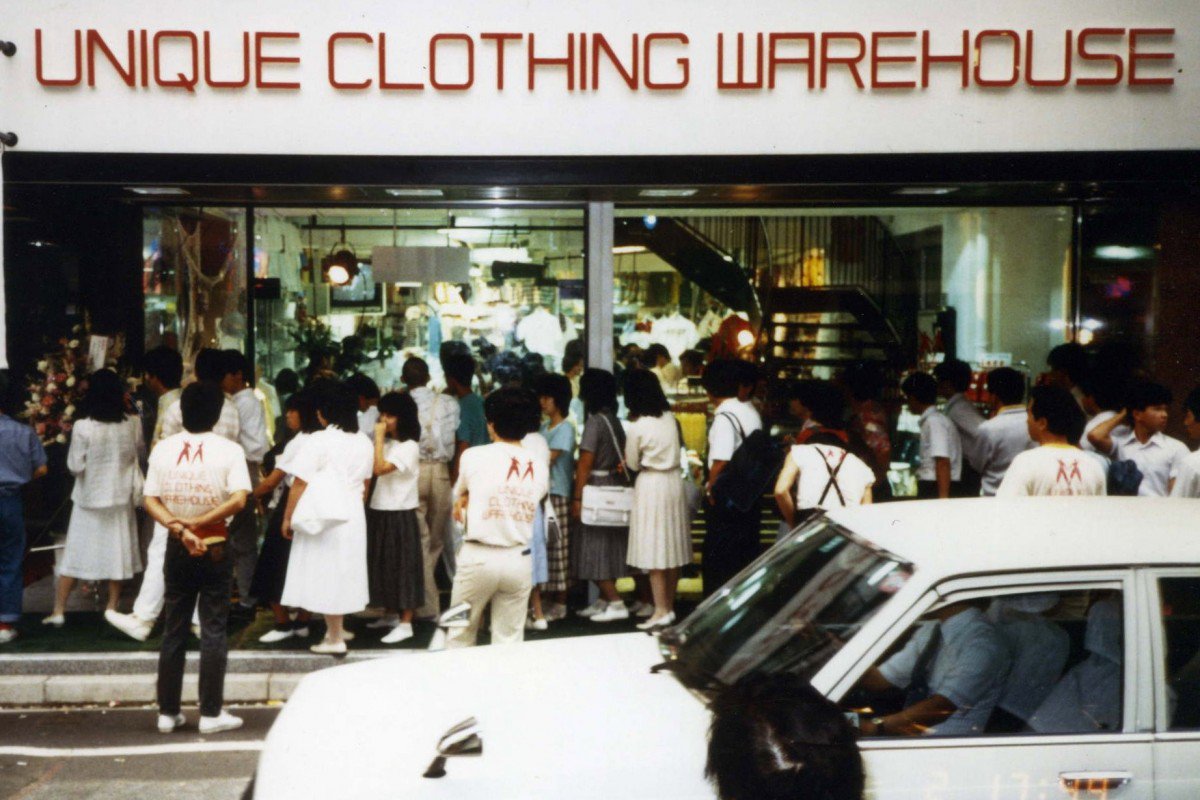How UNIQLO began in Japan and became a global phenomenon.

In 1949, a clothing store called Ogori Shoji was opened in the Japanese city Ube. The city was known for its heavy industry, coal mining and metal manufacturing. The menswear store thrived as people wanted basic, reliable clothing that was more stylish than workwear. Hitoshi Yanai was proud of his business, but wanted to grow. This store was UNIQLO’s predecessor.
In 1963, Hitoshi Yanai established Ogori Shoji Co. By this time, the company had six million yen in capital and many stores across Japan. The stores did well, the company grew steadily.
In 1984, a store called Unique Clothing Warehouse was opened in Hiroshima. Hitoshi’s son Tadashi had taken over the family business, and with him he brought an entirely new vision. Tadashi had travelled to the United States, and took inspiration from more “self-service” and “basic” clothing stores located on university campuses to create this new kind of retailer. A year after the flagship store, the first Unique Clothing Warehouse outlet store was opened.

In 1988, a misunderstanding in registering the company name led to the first spelling of ‘Uniqlo’. Tadashi, feeling the title was more in keeping with the simplicity and uniqueness of the brand, changed the store’s name.
The 90’s were a time of rapid change for Uniqlo. By 1994, the year that the company now called Fast Retailing Co was listed on the Hiroshima Stock Exchange, there were 100 Uniqlo stores across Japan. In 1996 the company opened an office in Tokyo. In 1997 they were listed on the Tokyo Stock Exchange, and decided to manufacture their own brand items. They devised a new logo, new store layout, and new clothing designs.
In 2001, with more than 500 domestic Uniqlo stores, it was time to take it global. The first international Uniqlo store was opened in London, and a year later a Shanghai store followed. 2005 saw the first American store, strategically in New York. The city sensibility and necessity for durable basics made Uniqlo wildly popular in New York, and the no-trend style became trendy. The 2000’s saw more stores pop up internationally, as well as collaborations with artists and designers.
Currently, Uniqlo has 2,136 stores in 22 markets. From a menswear store to a global juggernaut, nobody can disagree that Uniqlo – and its story – is definitely cool.
Subscribe to FIB’s newsletter for your weekly dose of music, fashion and pop culture news!







